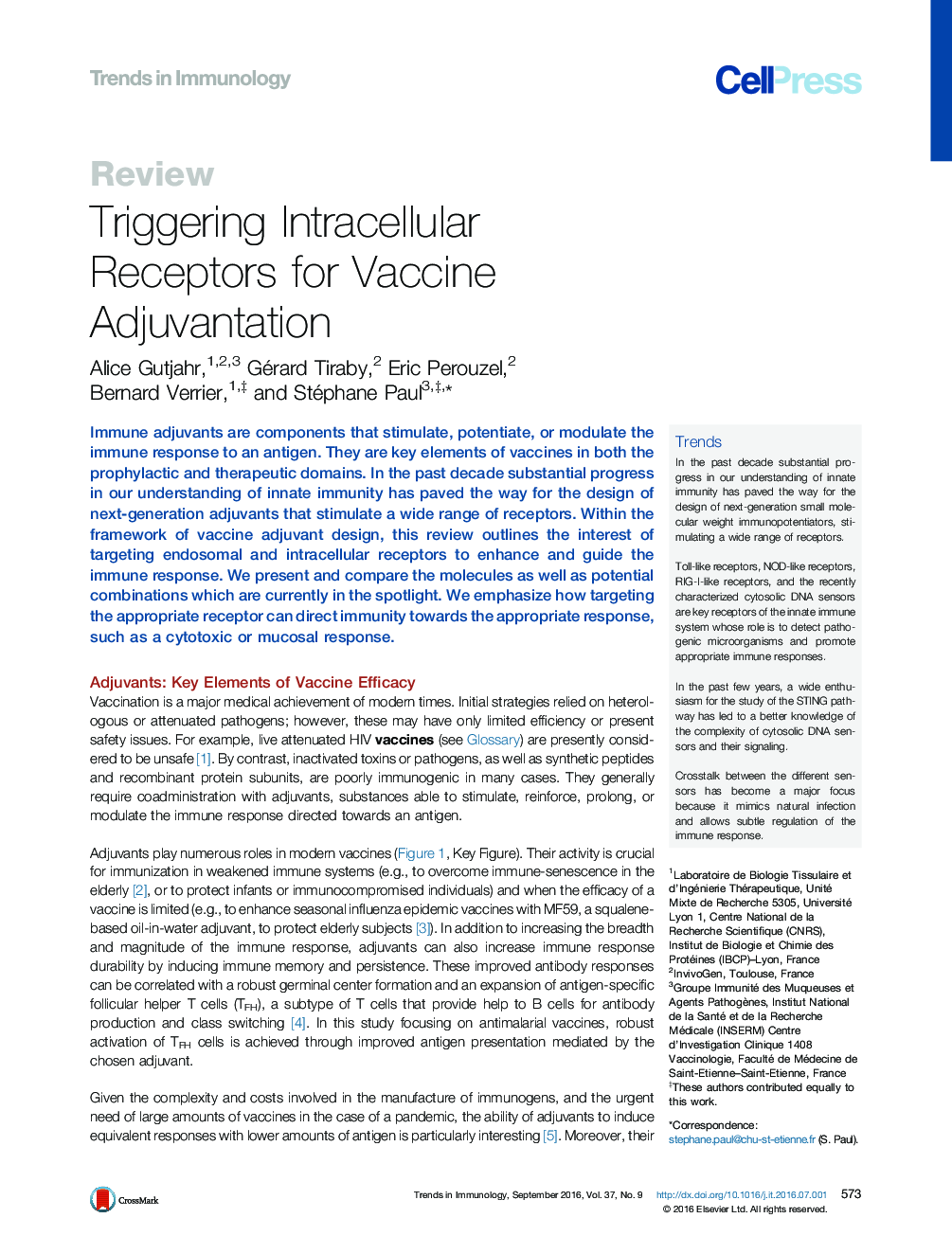| Article ID | Journal | Published Year | Pages | File Type |
|---|---|---|---|---|
| 4359678 | Trends in Immunology | 2016 | 15 Pages |
Immune adjuvants are components that stimulate, potentiate, or modulate the immune response to an antigen. They are key elements of vaccines in both the prophylactic and therapeutic domains. In the past decade substantial progress in our understanding of innate immunity has paved the way for the design of next-generation adjuvants that stimulate a wide range of receptors. Within the framework of vaccine adjuvant design, this review outlines the interest of targeting endosomal and intracellular receptors to enhance and guide the immune response. We present and compare the molecules as well as potential combinations which are currently in the spotlight. We emphasize how targeting the appropriate receptor can direct immunity towards the appropriate response, such as a cytotoxic or mucosal response.
TrendsIn the past decade substantial progress in our understanding of innate immunity has paved the way for the design of next-generation small molecular weight immunopotentiators, stimulating a wide range of receptors.Toll-like receptors, NOD-like receptors, RIG-I-like receptors, and the recently characterized cytosolic DNA sensors are key receptors of the innate immune system whose role is to detect pathogenic microorganisms and promote appropriate immune responses.In the past few years, a wide enthusiasm for the study of the STING pathway has led to a better knowledge of the complexity of cytosolic DNA sensors and their signaling.Crosstalk between the different sensors has become a major focus because it mimics natural infection and allows subtle regulation of the immune response.
